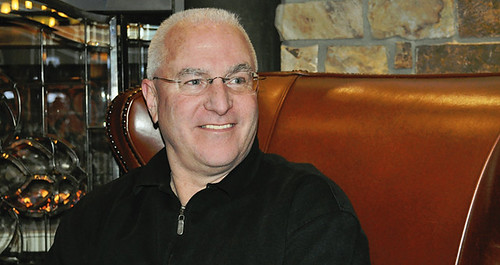
PREV ARTICLE
NEXT ARTICLE
FULL ISSUE
PREV FULL ISSUE
ARTICLE PROFILES W. DAVID PERKINSA January 25, 2016 Coin World article by Paul Gilkes profiles longtime E-Sylum reader and contributor Dave Perkins. -Editor
 Early in his more than two decades at IBM, weekends afforded W. David Perkins — owner of W. David Perkins Numismatics in Centennial, Col. — the opportunity to visit New York City to view auction lots and attend sales. In 2014, Dave switched careers from technology to becoming a full-time professional numismatist. Coin World: What triggered your interest in numismatics and how old were you at the time? What did you start collecting first? W. David Perkins: When I was 9 or 10 years old, my grandfather got me interested in coin collecting and numismatics. Like most young kids in the 1960s I collected Lincoln cents by date and Mint mark using the blue Whitman folders. I also collected dimes, quarters, and half dollars. The higher denomination silver coins often got spent, and thus I, like many, found these collections hard to complete. When in California during the summers I would get a $50 bag of cents maybe three times a week, and pull out the S Mint-marked cents along with other rare and scarce coins. CW: We know you have an affinity for early United States silver dollars and half dollars. What drew you to these issues? WDP: I got back into coin collecting in the early 1980s after purchasing a copy of Coin World to check on current prices of coins I'd pulled from circulation over the previous 12 years, or so. This awakened the collecting bug in me. I began learning about and buying coins that I'd never seen or handled “in person” and couldn't find or afford as a child, like Draped Bust silver dollars, Liberty Seated and Trade dollars, and Seated and Capped Bust half dollars. I liked the way these large coins looked and felt when holding them — heavy and old! Over time I focused more and more on the early U.S. silver and copper coins, these coins having been made from individually punched dies, and with all the inherent problems that the first U. S. Mint had during the early years — die varieties, overdates, die cracks and shattered dies, errors, etc. CW: We know you love numismatic research and love to trace die progressions and coin pedigrees. WDP: I do love studying and collecting die progressions on early U.S. coinage. I especially love late die states and cuds. A large portion of my numismatic research falls under the heading, “Famous Collectors and Collections.” I love the “thrill of the hunt.” In the 1980s, I began trying to contact current and former collectors of the early dollars 1794–1803, hoping they or a relative might have old letters and correspondence with other collectors and dealers, invoices from purchases, notes, annotated silver dollar reference books, photos, listings of old collections, etc. I've had great luck and success with this approach over the years. To read the complete article, see: THE BOOK BAZARREWayne Homren, Editor The Numismatic Bibliomania Society is a non-profit organization promoting numismatic literature. See our web site at coinbooks.org. To submit items for publication in The E-Sylum, write to the Editor at this address: whomren@gmail.com To subscribe go to: https://my.binhost.com/lists/listinfo/esylum All Rights Reserved. NBS Home Page Contact the NBS webmaster 
|